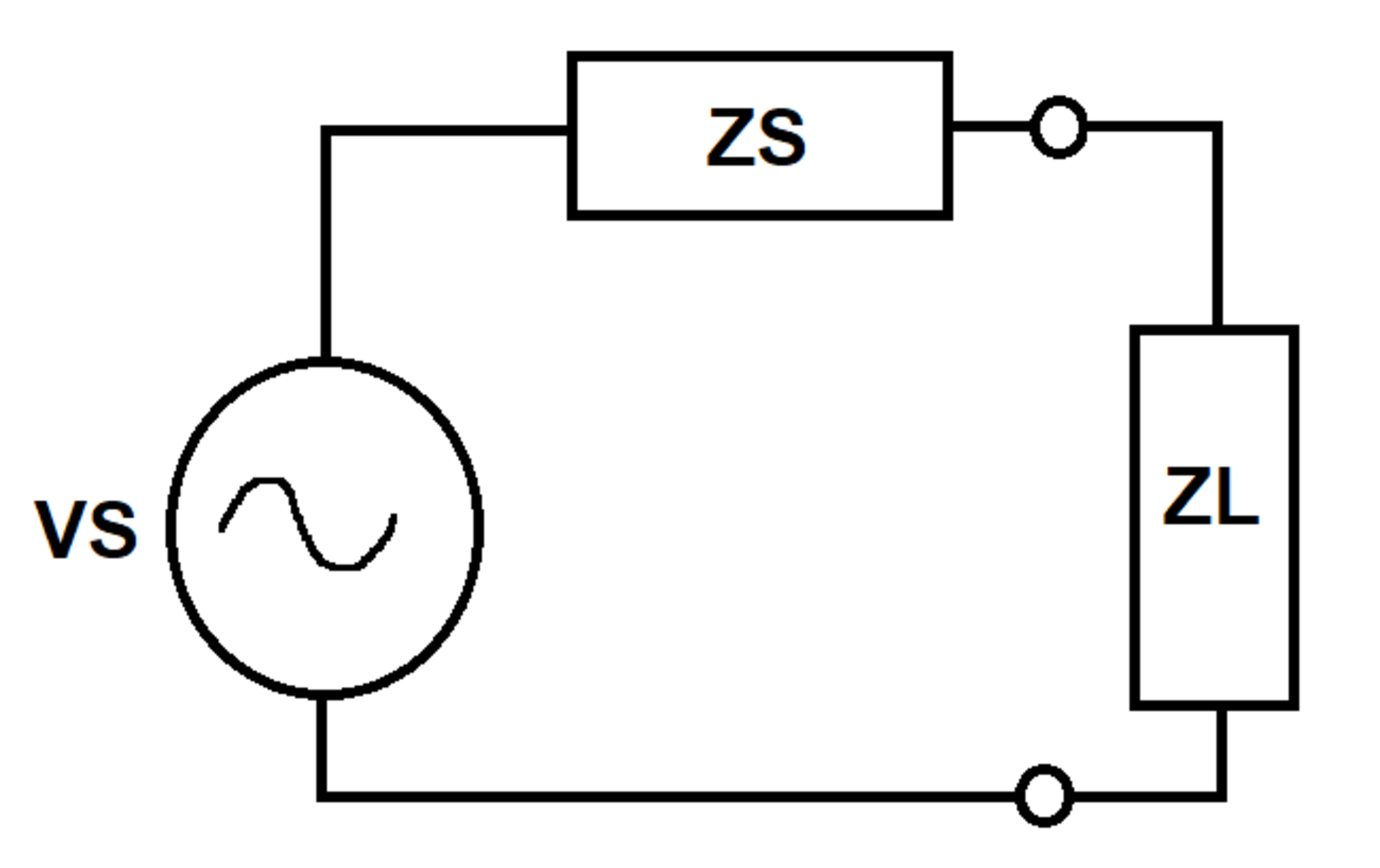Load Power vs. Load Angle
An AC voltage source has internal voltage V S and internal impedance Z S . A load impedance Z L is connected across the source terminals. Z L has the following form:
Z L = 5 e j θ − π / 2 ≤ θ ≤ π / 2
The active power (in watts) dissipated by the load at a particular angle θ is P L ( θ ) . Determine the following integral:
∫ − π / 2 π / 2 P L ( θ ) d θ
Bonus: Make a plot of P L vs. θ . Which θ value yields maximum P L , and what is notable about it?
Details and Assumptions:
1)
V
S
=
1
0
+
j
0
2)
Z
S
=
1
+
j
2
3)
j
=
−
1
4)
Source voltage is given in RMS (root mean square value)

The answer is 44.44.
This section requires Javascript.
You are seeing this because something didn't load right. We suggest you, (a) try
refreshing the page, (b) enabling javascript if it is disabled on your browser and,
finally, (c)
loading the
non-javascript version of this page
. We're sorry about the hassle.
1 solution
Solution edited slightly.
Log in to reply
I just read your comment to my solution to your previous problem. Now it makes sense. Thanks!
That optimal angle corresponds to Z L = 1 − j 2 , which is the complex conjugate of the source impedance.
I am attempting your latest problem and I have wound up with a rather expensive optimization problem in 5 variables (the three real parts of impedances and the two imaginary parts). To solve this problem, I could honestly use a hint as to how to approach this in a time efficient manner.
Log in to reply
Indeed, this one can be as hard as you want. The easy way is:
1) Calculate the currents from the reference case
2) Sweep the real part of ZA from zero to some upper bound (determined by RB and RC not allowed to be negative)
3) For each RA, take a voltage drop using the known current to calculate VN
4) Knowing VN and the required currents for IB and IC, calculate the impedances for ZB and ZC
Log in to reply
Your suggestion is a really neat method. Unfortunately, I got the wrong answer. Could you give feedback? Hoping that my code is readable.
1 2 3 4 5 6 7 8 9 10 11 12 13 14 15 16 17 18 19 20 21 22 23 24 25 26 27 28 29 30 31 32 33 34 35 36 37 38 39 40 41 |
|
Log in to reply
@Karan Chatrath – Do your currents add to zero in the base case?
Log in to reply
@Steven Chase – Yes, they do add to zero
Log in to reply
@Karan Chatrath – Here are mine:
(76.6144161503+6.9101055907j)
(-45.2927204974-17.1998571452j)
(-31.3216956529+10.2897515545j)
Log in to reply
@Steven Chase – I obtain the same.
Log in to reply
@Karan Chatrath – Strange. I don't see any real difference. I have attached my code:
1 2 3 4 5 6 7 8 9 10 11 12 13 14 15 16 17 18 19 20 21 22 23 24 25 26 27 28 29 30 31 32 33 34 35 36 37 38 39 40 41 42 43 44 45 46 47 48 49 50 51 52 53 54 55 56 57 58 59 60 61 62 63 64 65 66 67 68 69 70 71 72 73 74 75 76 77 78 79 80 81 82 83 84 85 86 87 88 89 90 91 92 93 94 95 96 97 98 99 100 101 102 103 104 105 106 107 |
|
@Karan Chatrath – Do you need to say Vmin = abs(VN)?
Log in to reply
@Steven Chase – Nice catch. I just reran the code and I get the answer you obtained. Thank you for the feedback. Bummer that I could not get this one right. It was fun
Log in to reply
@Karan Chatrath – I would delete and repost, but somebody has already solved
Log in to reply
@Steven Chase – Oh it is okay. I would not expect you to repost anyway. I got it wrong fair and square. Plus I see this as a lesson in presence of mind. This tiny mistake was not easy to spot for me.
Log in to reply
@Karan Chatrath – Alright, glad you enjoyed it despite the unfortunate luck
Solution outline only provided.
I = Z S + Z L V S ⟹ P L = r e a l ( I Z L I ∗ )
Plugging in the expressions and given values gives the required function P L ( θ ) . Here, the angle is deliberately plotted in degrees. From this point, it is easy to numerically compute the required integral (it can probably be done analytically too, but I did not compute the exact integrand to be sure) . The required answer is: ∫ − π / 2 π / 2 P L ( θ ) d θ ≈ 4 4 . 4 4
The value of θ for which P L ( θ ) is maximum is − 6 3 . 4 3 2 ∘ . This happens to be the negative of the phase of the complex number Z S .